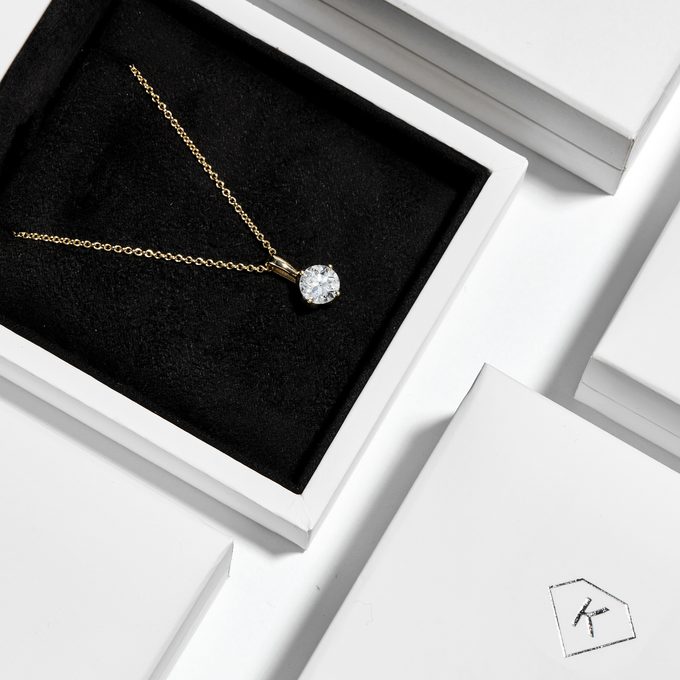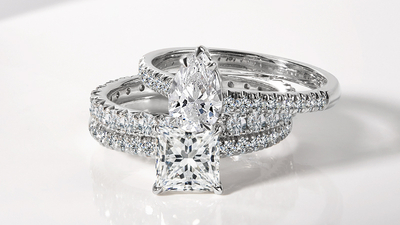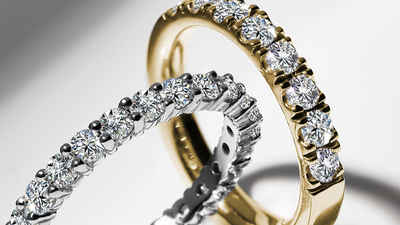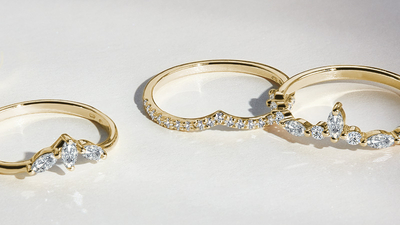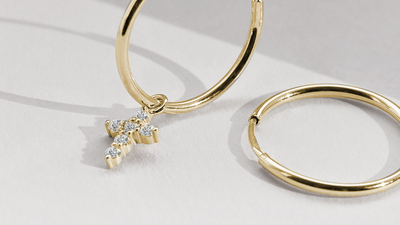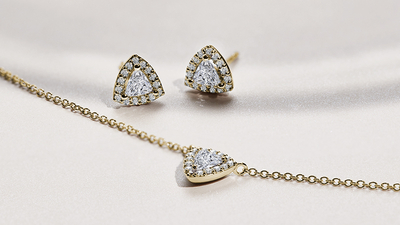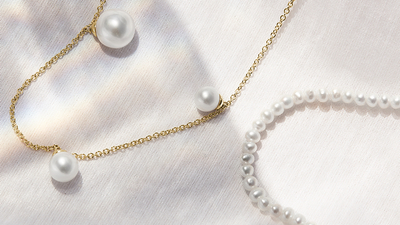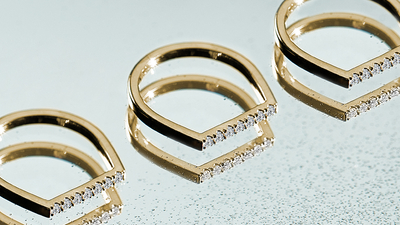We believe that jewelry - from the most precious down to the simplest - should be worn every day, not hidden in a safe or a jewelry box. Maybe it will get some scratches on it and lose a bit of its shine, but that's okay. It shows that your jewelry is living life with you. Most jewelry requires very little care. Just wear it and enjoy it. And remember a few basic tips:
- How to clean jewelry at home
- Caring for gold
- Caring for silver
- Caring for pearls
- Caring for jewelry with diamonds and precious stones
- How to professionals clean jewelry
- How to store jewelry
- When not to wear your jewelry
How to clean jewelry at home
First, it is important to mention what you should avoid doing. Don’t use any abrasives for home cleaning. Toothpastes are not suitable, as well as wet or hard paper napkins. We also do not recommend using any chemicals that are not directly designed for cleaning jewelry. And if you would like to wear rubber gloves to clean jewelry, choose the non-powdered ones so that you do not smudge the jewelry after cleaning it.
The best thing is to clean your jewelry with a clean, soft cloth each time after you take it off (even every day). This will remove cosmetics, grease, sweat and any organic residue that may have accumulated on the surface throughout the day. Another way to clean it is with a soft toothbrush. Soak the jewelry first in lukewarm water which has soap or detergent added to it. Then brush it gently but thoroughly with the toothbrush. Finally, rinse it in a stream of lukewarm water, pat it dry with a cloth and let it dry off completely on its own.
If you decide to choose a chemical cleaner and you bring home from the store a cleaning product in the form of a solution or foam, follow the advice of an expert or the instructions on its packaging exactly. Also pay attention to whether the cleaning product is suitable for the type of jewelry you want to clean as well as any gemstones in it - for example, opals and pearls are sensitive to chemicals and may not tolerate the product well.
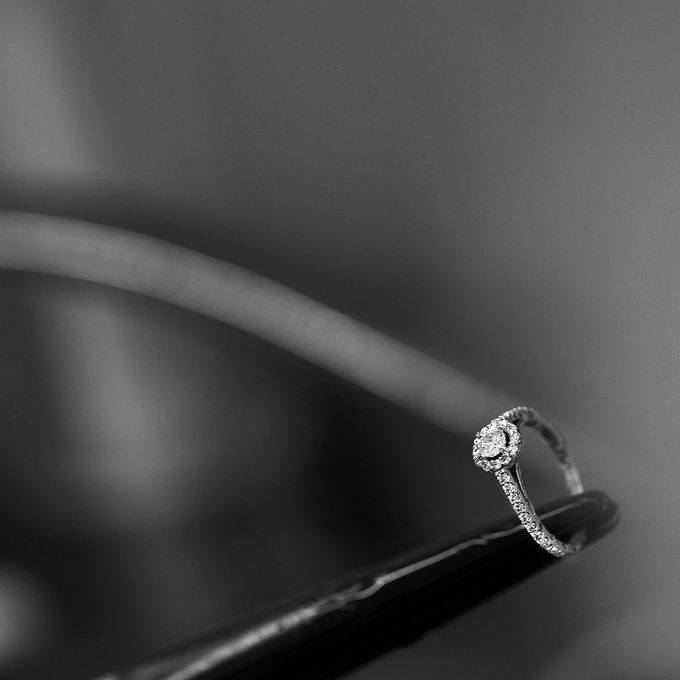 |
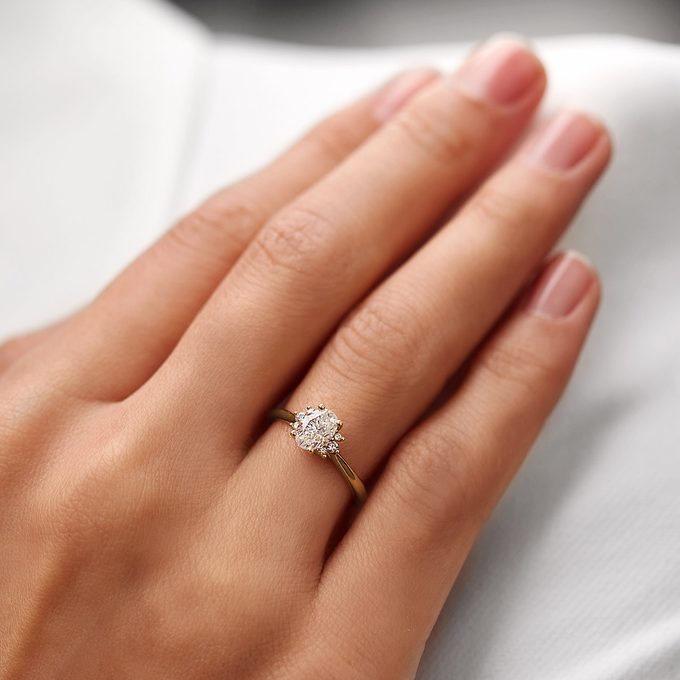 |
Care based on the type of material
Caring for gold
When it comes to gold, we recommend avoiding chlorine, as it can permanently change its color. This is mainly the case with low karat gold which is used in some foreign countries. Although gold alloys for jewelry making are generally relatively hard materials, we recommend that you don’t wear jewelry made of steel for instance, on an adjacent finger. Steel is harder and could scuff the surface of the gold.
If your gold jewelry loses its luster, it is often enough just to polish it with a cotton cloth or cleaning wool from a jewelry store which has been impregnated with a cleaning solution. There are also foams and creams available for home cleaning of gold, which you should apply to jewelry with a cloth or a soft brush. And if you're wondering about how to clean your gold at home really thoroughly when the jewelry has a rough surface or small holes (such as a gold chain), then use a liquid solution. Immerse the jewelry in it and it will remove dirt in the folds, engravings and patterns.
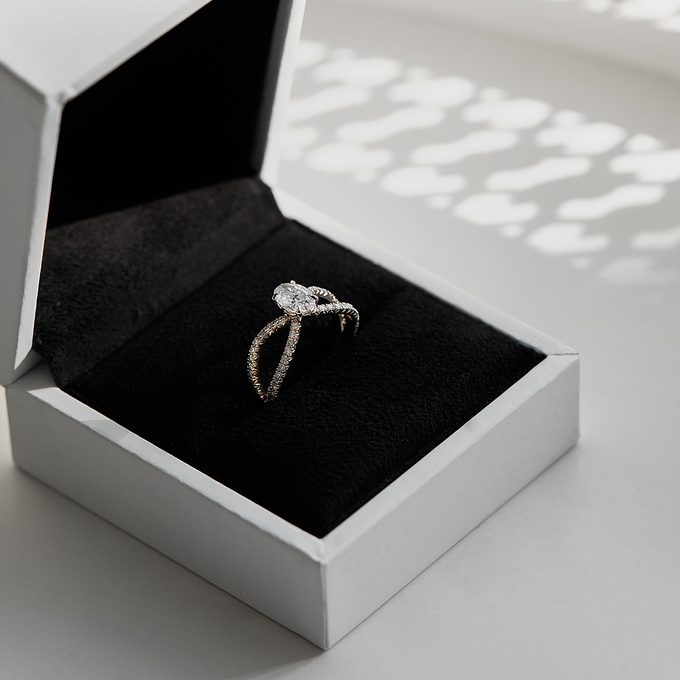 |
 |
Sometimes bluish or greenish spots can appear on gold jewelry. You could try to deal with these by using citric acid or lemon juice. However, if this method doesn’t help, it is better to take the jewelry to a jeweller for professional cleaning. As for gold blackening, this occurs only rarely. It is never the gold which is the one to react, but rather the other metals which are alloyed with the gold. There can be many causes of blackening. For example any medications used, aggressive sweat, allergies to any of the elements present, cosmetics with iodine or sulphur, and so on. Jewelry made of white gold is usually protected against blackening and physical damage by a layer of rhodium, which we recommend renewing from time to time. The recommended frequency of rhodium plating depends on many circumstances and may sometimes be necessary every few months, but often the jewelry will stay beautiful for many years.
If you own more jewelry, we recommend purchasing an ultrasound for home use. Ultrasonic cleaning at home is great for chains, bracelets, rings without stones or with flawless diamonds of smaller size. But this type of cleaning is not at all suitable for pearls which could be damaged by the ultrasonic waves. Ultrasound should also not be used on opals, corals and some others. We also don’t recommend cleaning emeralds or larger gems at home with ultrasound. They may contain inclusions and only an experienced jeweller will know if the stone can withstand the ultrasound or not.
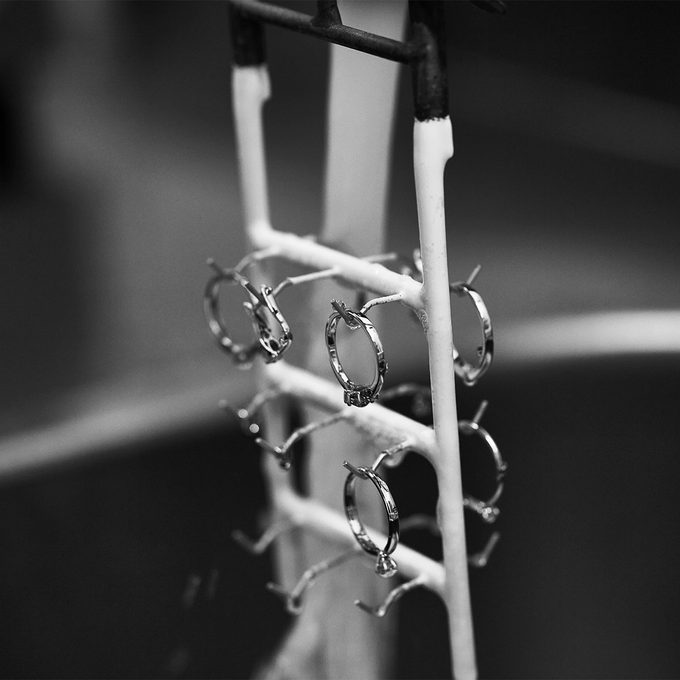
Caring for silver
Silver jewelry can be wrapped separately in tissue paper and put in a closed small box in your jewelry case. It should be stored in a dry spot, where it will be protected from air and dust. Silver jewelry is prone to blackening, so it is advisable to select pieces treated with rhodium and to renew this surface layer once a year (especially for silver rings and earrings). An easy way to clean silver jewelry is to use a cleaning product purchased at a drugstore. Pour the solution into a small jar and immerse the jewelry in it briefly. Use a hook made of a metal paper clip for this or ideally, plastic tweezers. Finally, rinse the jewelry under a stream of water and pat it dry. As with gold, it is important to let the jewelry finish off drying on its own in the air.
Products designed to clean silver contain ammonia, so we recommend following the safety instructions on the product label. In particular, avoid contact with the skin and do not inhale any of the fumes. We also know from experience that if the jewelry is left in the cleaning solution too long, it may lose its luster and must then be polished.
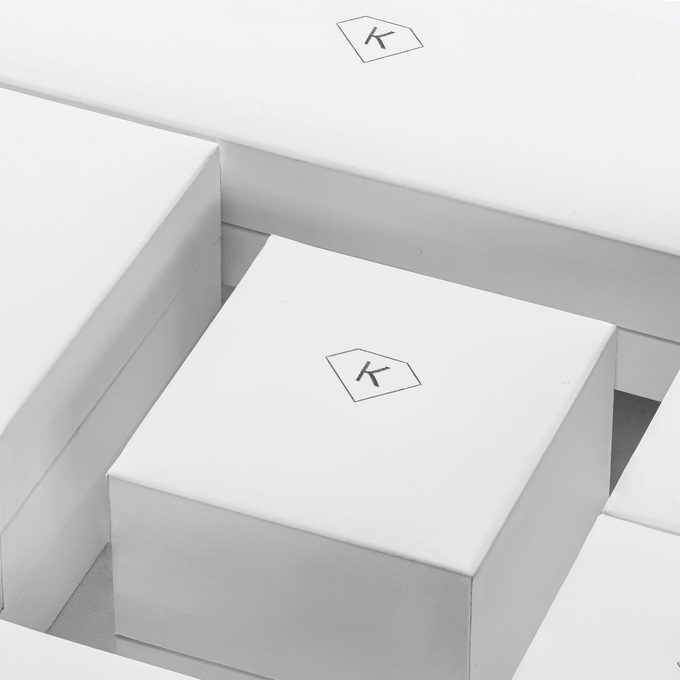 |
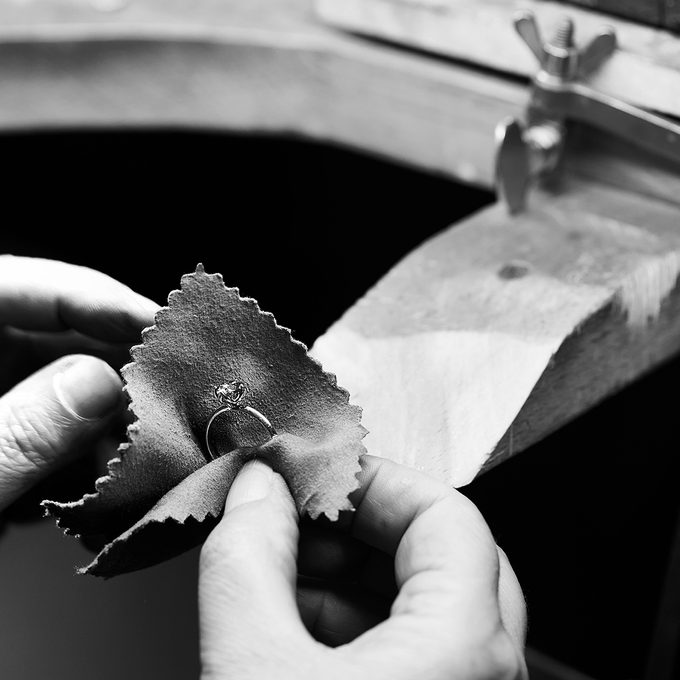 |
Caring for pearls
Jewelry with pearls should be stored in a box specifically reserved for it, and each piece should be stored separately in a soft protective case. The jewelry box should not be completely airtight, because pearls need to breathe.
In order to keep their beauty, pearls need attention. They also need to be worn. They love contact with skin. Peals are radiant and beautiful due to the natural fat that human skin gives them. The worst thing a pearl can encounter is drying out. The surface of the pearl then breaks down and begins to flake, which can be seen under a magnifying glass. If this happens, the pearl loses its beautiful luster and begins to slowly crumble. Such a pearl can to some extent be saved by ‘oiling’ its surface. Therefore, if you clean pearls in detergent water or in extreme cases in alcohol, you should always finish the process by oiling them at the end. Ideal as soon as they dry. If possible, do not soak pearl necklaces, but clean them with a damp cloth. Never clean pearls in acidic or alkaline solutions such as vinegar or citric acid.
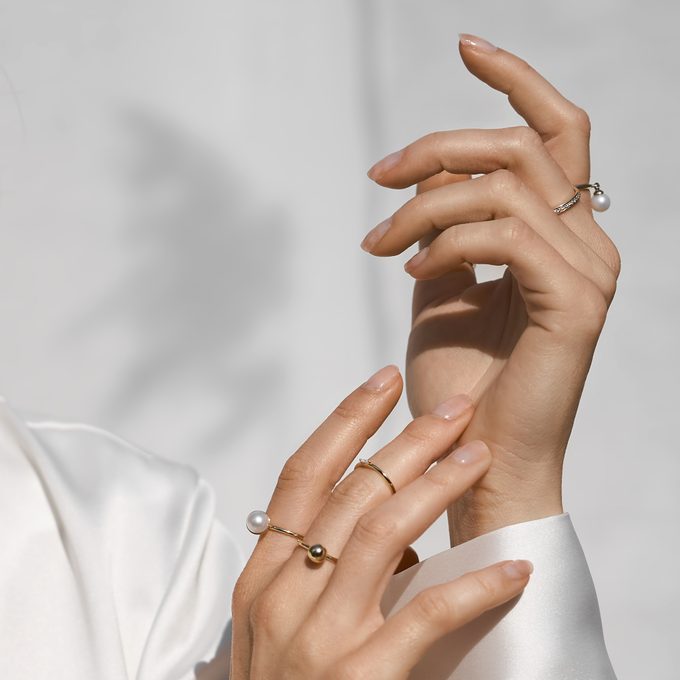 |
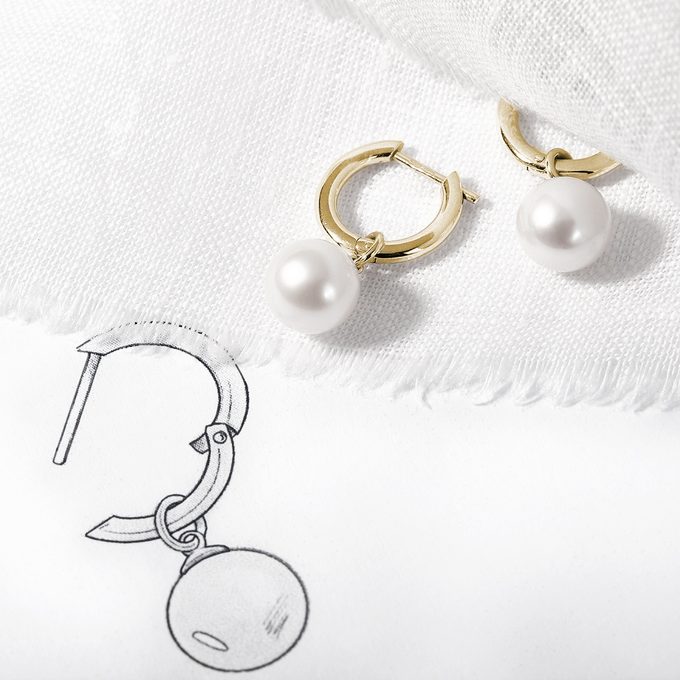 |
Pearls are delicate and require care. They are soft so therefore never clean them with anything metal as they can be easily damaged. They must not be exposed to high temperatures either, as they could crack, blacken, lose their luster and eventually disintegrate into a powder. They should also not come into contact with chemicals such as perfumes, make up, various creams and the like. Therefore, we recommend that you follow a process of putting the pearls on last and removing them first.
Since a pearl is attached to metal with glue, it is normal for it to come loose over time, even if it is glued with good quality glue. Therefore, we recommend checking your glued pearls regularly. Just take the pearl between your fingers and try to turn it gently. If the pearl moves, it would be wise to set it aside and choose another piece of jewelry and have this pearl be reglued by an expert.
With pearl necklaces, make sure that the thread is not slack. You will be able to recognize a quality pearl necklace by the way it has been threaded. The necklace should always be knotted. In short, you should be able to find a knot between the individual pearls, so that neighboring pearls don’t knock against each other. What’s more, if the necklace then breaks, the pearls will not all fall out. At the same time however, the knots must be tightened well. If you pull on both ends of the necklace, there must be no gaps between the pearls. And any gaps must not remain after you release the ends. If you do find gaps, the necklace is not well made.
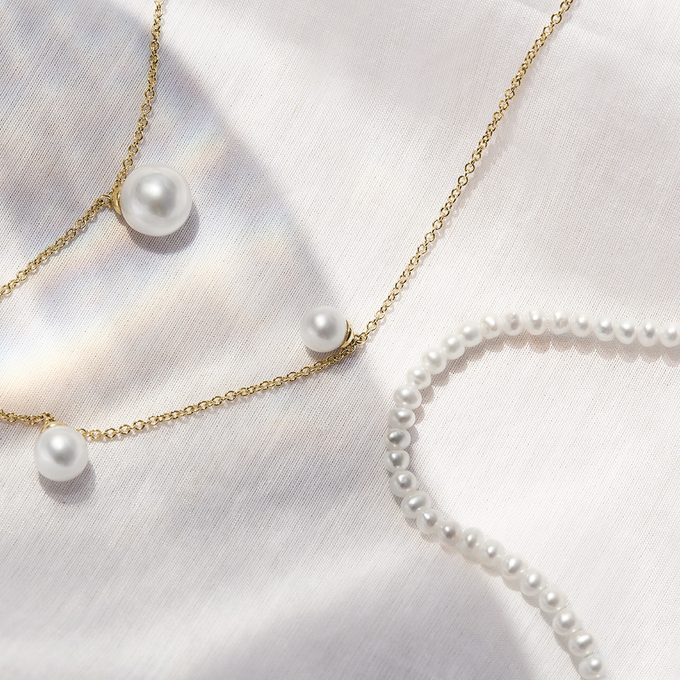
Caring for jewelry with diamonds and precious stones
We recommend storing such jewelry separately, especially jewelry with gemstones, in order to prevent them from damaging. Precious stones generally don’t benefit from high temperatures and excessive exposure to the sun and some are sensitive even to sudden changes in temperature and certain chemicals. They don’t even do well when in contact with dust, because it contains hard silica particles and is also difficult to clean.
A damp cloth or warm water (with or without soap) will usually be enough to home clean jewelry with gems. Remove dirt from diamonds with a soft brush dipped in warm water with detergent in it and then rinse the jewelry under running water. Check the stones regularly for tightness in their setting so that you do not lose them.
And one last tip: you can restore the shine to pearls and precious stones with pure evening primrose oil, which you can use to coat the pearls or minerals. In the case of gemstones, we recommend applying a thicker layer, leaving it for a few hours for the oil to absorb into the damaged stone, and then wiping it off with a dry cloth or napkin on the surface. Under no circumstances do we recommend dipping the entire jewelry piece in the oil!
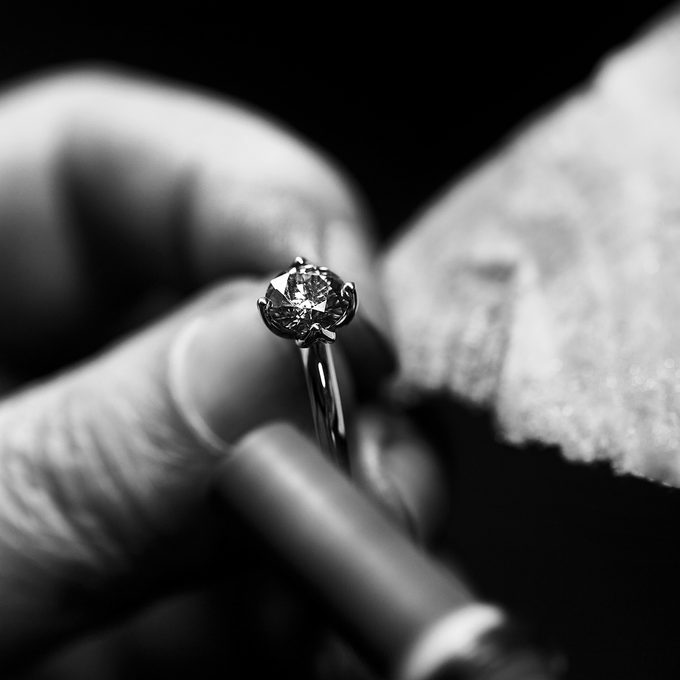 |
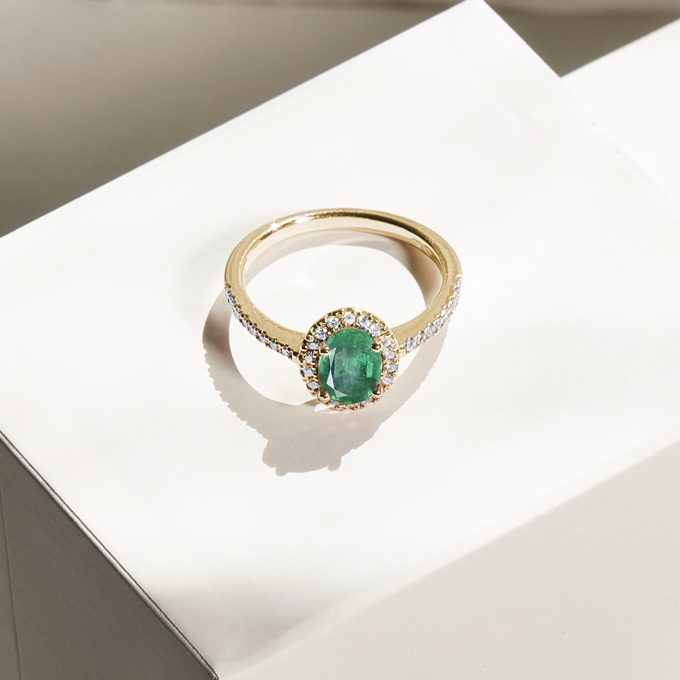 |
How the professionals clean jewelry
Now and then, your jewelry definitely deserves professional care and it pays to entrust it for cleaning in the hands of jewelry experts. A jeweller can then evaluate the best process for revitalizing your jewelry. If the surface of the piece is scratched and the metal has lost its luster, it will probably need to be finely sanded. After smoothing out the surface with emery, the jewelry will be polished. Finally, the ultrasound will remove any remnants of the polishing paste and, if necessary, the jewelry is then electroplated. However, ultrasound cleaning is not suitable for pearls, corals and some other minerals that must be removed before the ultrasound is used.
At the Klenota jewelry studio, we carry out ultrasound cleaning of jewelry, rhodium plating and we also clean freshwater and rare pearls. When you buy jewelry from us, these services are free of charge to you for two years.
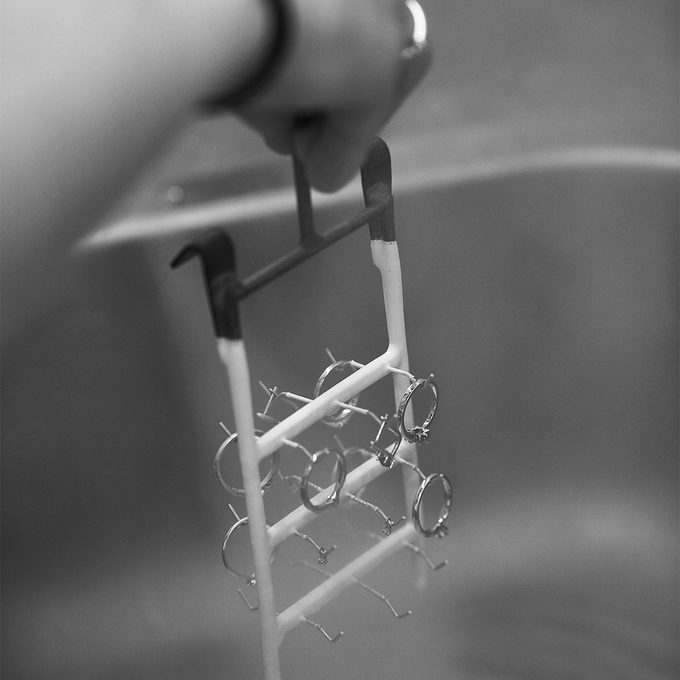
How to store jewelry
The ideal way to store it is in a jewelry box lined with a soft fabric in such a way that your treasures do not touch each other. The ideal conditions for storing jewelry are dry air, room temperature and darkness, which suit gemstones. If you take your jewelry off in an unexpected place, wrap it in a small plastic bag or paper handkerchief, but be sure not to put it inside your wallet along with coins. A pill dispenser for instance will be great for storing jewelry while you’re travelling.
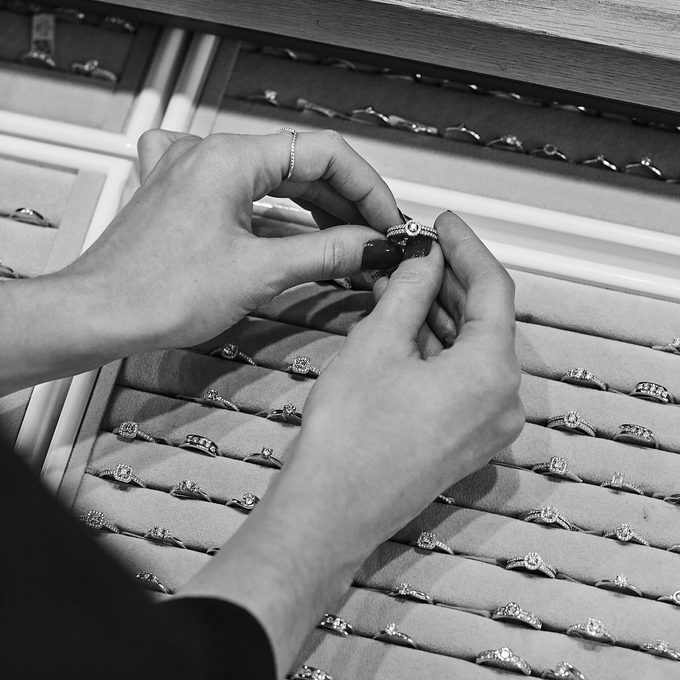 |
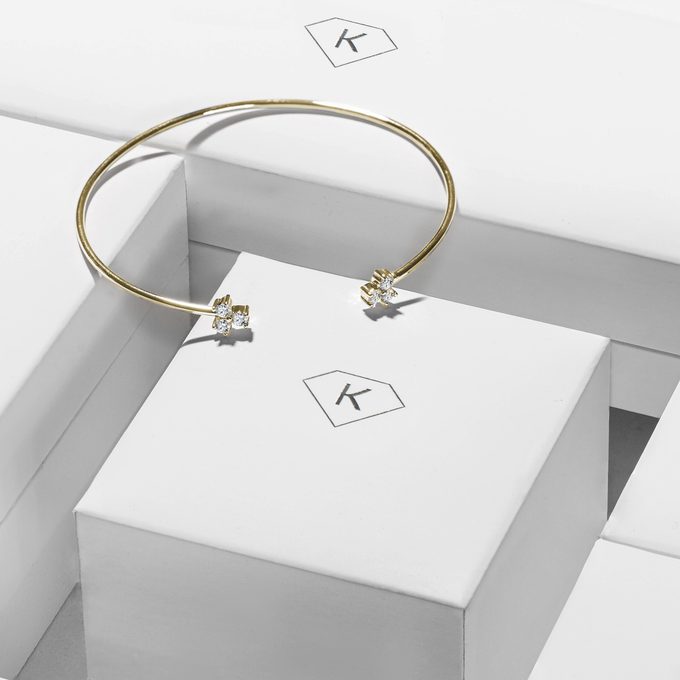 |
When not to wear your jewelry
The simplest principle to apply is to put jewelry away in situations where there is a high probability of damage or greater wear. So when is it better to take off your jewelry?
- Before contact with chemicals which could damage the surface of the jewelry or change its color (for instance, when you are cleaning)
- Before doing bigger manual or dirty work (this might be work in the garden, at home, or when doing various building repairs or renovations)
- Before using cosmetics (pay particular attention to hair sprays and perfumes. After applying any creams or oils, you should also let them absorb for at least 10 minutes before putting on jewelry.)
- Before sports (sweating, among other things may be a reason for greater wear)
- Before swimming (especially before swimming in chlorinated pools with chemically treated water or in salt water, but also before bathing at home)
- Before sleeping (especially for pearl jewelry)
